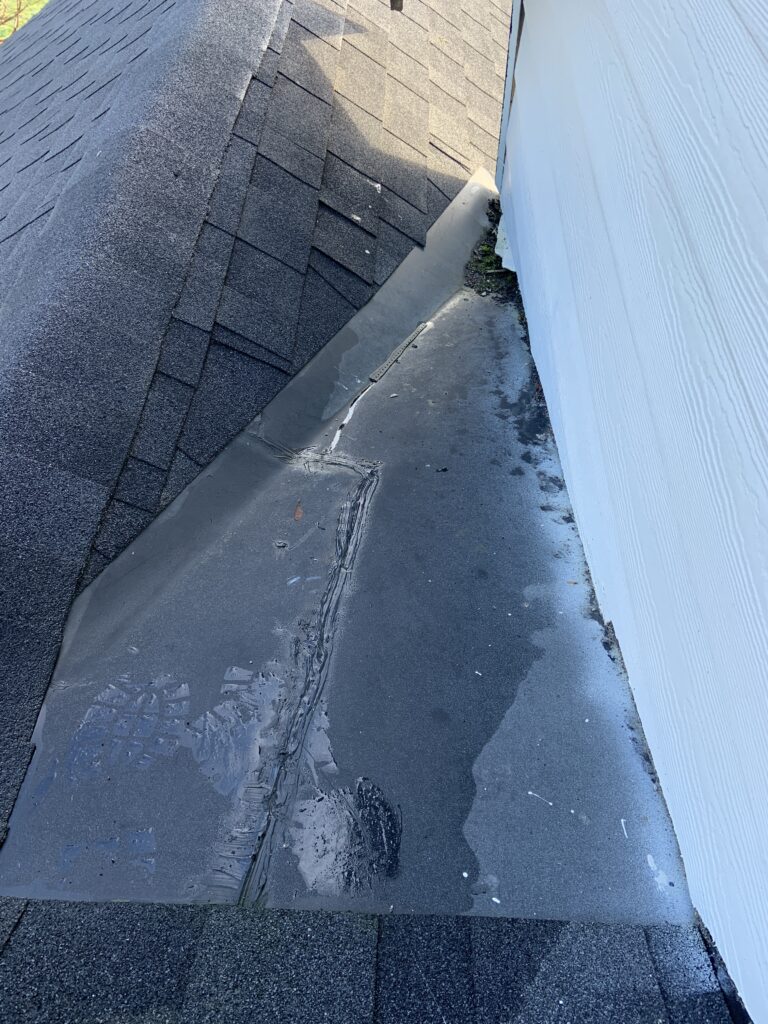- Photo: Complex roof design with four slopes converging and two type of roof covering.
- Abstract: North Shore and Sunshine Coast home inspector inspects a new-build home and identifies a roofing issue.
Sometimes we just have to comment on design.
As a home inspector, commenting on design is not usually in our scope of work. After all we’re not trained as an architect so commenting on the floor plan or an efficient bathroom layout is not what our clients are expecting from us. However, sometimes bad design makes an impact on building performance and that’s when design enters the domain of the home inspector.
We pay special attention where roof lines come together.
Roofs are perhaps the most common place where weak design elements may pose a significant risk of building envelope damage, if overlooked. When several different roof lines come together and intersect, compound slopes and valleys are created. These valleys are often tucked away and are typically not visible from the ground. This is why it is so important for a home inspector to walk on the roof whenever it is safe to do so.
Poorly thought out design does happen.
Due to how the two slopes come together the water that lands in and above this valley is funnelled to the corner of the second floor wall. Roof-to-wall intersections are relative weak points in the building exterior and these corners tend to be the most prone to failure.
Additionally, any leaves or other debris falling off trees and landing here will tend to build up and create a natural dam, restricting rainwater flow. This can cause rainwater to back up under the flashing and or siding, which increases risk of leaks and subsequent damage to the roof sheathing and interior walls of the house.
The contractor comes through with a good solution.
The design detail is that of a small valley which was created between the second floor wall and two first floor roof slopes. A rubberized material was used to conform to the multiple slopes and was installed underneath the surrounding shingles and up the adjacent wall. This is was reasonable product to use and a good installation technique was noted.
So what are the options for the buyer?
The low cost solution is to regularly inspect this area and remove any accumulated wind-blown debris. But be safety wise and use a properly trained individual with fall protection, as this is a steep part of the roof and access is difficult.
An alternate solution is modify this section of the roof. Since this is a new build and only a small area of the roof is affected, the buyer can consider negotiating with the builder to have this section revised to minimize or remove the issue.
Finally, if the buyer decides to purchase the property and the builder refuses to make any changes to the roof, then we recommend a warranty inspection prior to the 5 year anniversary date of the new home warranty policy. Under the policy, the house is protected from water infiltration and damage for 5 years. Should any water ingress be noted, then the leak and subsequent water damage will be repaired under warranty.

